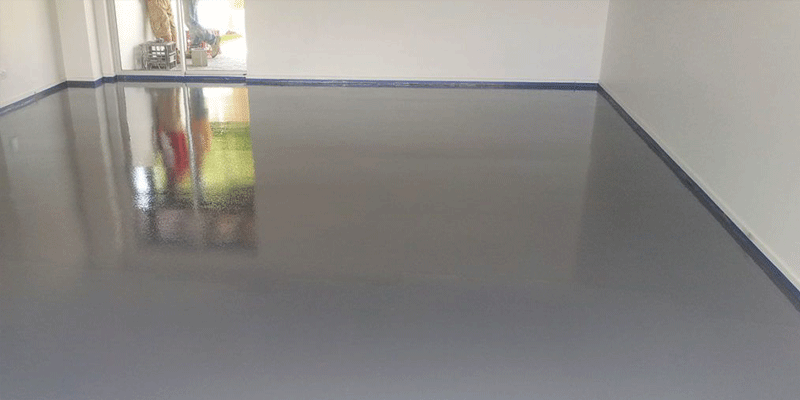Does My Epoxy Coating Need a Non-Skid Additive?

Do you own an epoxy floor but need a way to make it non-slip? You may be wondering if you need to add a non-skid additive to your epoxy coating. The short answer is, maybe. It all depends on the type of floor you have and how it will be used.
If you have an epoxy floor in your home, then the chances are good that you won’t need to worry about a non-skid additive. Epoxy floors in homes are usually installed in areas that don’t see a lot of foot traffic, like garages or basements. And even if they do see a lot of foot traffic, homeowners usually don’t mind if their floors are a little slippery.
However, if you have an epoxy floor in a business, then you will probably want to add a non-skid additive to your coating. This is because business floors see a lot of foot traffic, and slippery floors can be dangerous. Non-skid additives will make your floor safer for employees and customers alike.
So, if you’re not sure whether or not you need a non-skid additive for your epoxy floor, ask yourself these questions:
· What type of floor do I have?
· How much foot traffic does my floor get?
· Would I mind if my floor was a little slippery?
If you answered “yes” to the last question, then you probably don’t need a non-skid additive. If you answered “no” to the last question, you probably need a non-skid additive.
Now, let’s discuss some of the fundamentals of non-skid epoxy additives in more detail to help you make a decision.
Table of Contents
What is an Epoxy Additive?
An epoxy additive is a material added to an epoxy resin to change its properties. There are many different types of epoxy additives, each of which serves a different purpose. Non-skid additives are used to make floors less slippery.
How Do Non-Skid Additives Work?
Non-skid additives work by creating a rougher surface on the floor. This rougher surface provides more traction for shoes, making the floor less slippery.
There are many different types of non-skid additives, each of which creates a different level of traction. Some non-skid additives are very coarse and will make your floor very rough. Others are much finer and will only slightly change the surface of your floor.
The type of non-skid additive you choose will depend on the amount of traction you need. If you only need a little bit of traction, then you can use a finer additive. If you need a lot of traction, then you will need to use a coarser additive.
Are There Any Drawbacks to Using Non-Skid Additives?
There are a few potential drawbacks to using non-skid additives. First, they can make your floor more difficult to clean. This is because the rougher surface created by the additive can trap dirt and debris. Second, they can make your floor more difficult to walk on. This is because the added traction can make it harder for shoes to grip the floor.
Third, they can make your floor more slippery when it’s wet. This is because water can fill up the pores created by the additive, which makes it harder for shoes to grip the floor.
They can also reduce the lifespan of your floor. This is because the rougher surface can wear down over time, and the added traction can cause floors to degrade faster.
So, if you’re considering using a non-skid additive on your epoxy floor, weigh the pros and cons carefully before making a decision.
What Are Some Other Types of Epoxy Additives?
In addition to non-skid additives, many other types of epoxy additives serve different purposes. For example, there are UV-resistant additives that can help extend your floor’s lifespan. There are also anti-slip additives that can make your floor less slippery without changing its surface.
If you’re not sure which type of additive is right for your floor, consult with a professional. They will be able to recommend the best additive for your needs.
DIY Installation vs. Professional Epoxy Services
If you’re considering adding a non-skid additive to your epoxy floor, you may wonder whether you should do it yourself or hire a professional.
Adding a non-skid additive to your floor is a relatively simple process, and it’s something that most people can do themselves. However, there are a few things to keep in mind if you’re thinking about doing it yourself.
First, make sure you read the instructions on the product carefully before beginning. This will help to ensure that you use the product correctly and don’t damage your floor.
Second, be aware that some products require special equipment for application. If you don’t have the right equipment, you may not be able to use the product properly.
Third, be sure to follow the drying and curing times for the product. If you don’t, you may not get the results you’re hoping for.
If you’re not confident in your ability to add a non-skid additive to your floor, it’s best to hire a professional. They will have the experience and equipment necessary to do the job correctly.
Hiring a professional epoxy company has a few other benefits as well. For example, they can help you choose the right type of additive for your needs. They can also ensure that your floor is properly prepared for the additive. And they can apply the additive evenly across your floor so that you get the best possible results.
If you’re considering adding an epoxy additive to your floor, weigh the pros and cons carefully before making a decision. And if you’re not sure whether or not you can do it yourself, it’s always best to hire a professional.